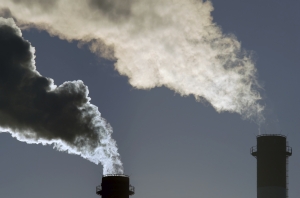In part two of this two-part series we discuss our long-term expectations for wholesale electricity prices in the NEM to 2040, derived from our quarterly Australian Electricity Outlook (AEO). Modelling considers two key pathways for the future development of the NEM, including our Central case for the “current transition” of the market, and an Alternative case, reflecting AEMO’s “step change” shift to renewable energy in line with a “well below 2°C” carbon budget under the Paris Agreement.
As asset owners and investors seek to make informed long-term decisions, modelling provides an independent view of price dynamics in each region of the NEM, underpinned by the likely economic effects of different technology pathways, and the impact of renewable energy and new flexible capacity on competitive market dynamics, providing an important reference point for future investment and policy decisions.
Modelled scenarios for the NEM
Modelling of scenarios serves an important role in understanding the impact of potential futures on the market, helping decision makers to assess potential risks, opportunities and development needs in the NEM. While there are many combinations for possible future market development, the scenarios modelled within our AEO capture two key pathways, including a Central case for the “current transition” of the market, and an Alternative Case, reflecting AEMO’s “step change” shift to renewable energy in line with a “well below 2°C” commitment under the Paris Agreement.
Table 1: Summary of modelled scenarios
Scenario |
Summary of scenario |
Central Case: Current transition |
RepuTex’s view of the current transition of the NEM, reflecting the most likely market drivers based on current state and federal policy, current technology trajectories, central energy consumption, economic growth, renewable energy investment, and announced or economic retirements. |
Alternative Case: Step change shift to renewable energy |
Reflects the development of the NEM under more aggressive action on climate change in line with AEMO’s “Step Change” shift to renewable energy. This scenario accounts for faster technological improvements and a “well below 2°C” Paris climate scenario (achieving net-zero emissions prior to 2050), where aggressive global decarbonisation leads to faster technological improvements, the accelerated exit of existing generators, greater electrification of the transport sector with increased infrastructure developments, energy digitalisation, and consumer-led innovation. |
In particular, the Step Change scenario recognises the need for more aggressive action on climate change under the Paris Agreement, assuming a faster rate of technology cost reductions for low emissions technologies, and the idealised design of policy to drive the uptake of renewable generation resources with more ambition than current state and federal frameworks.
The scenario is underpinned by the implementation of a cumulative electricity sector “carbon budget” of 1,465 Mt CO2e from 2020-50, achieving net-zero emissions prior to 2050, consistent with an average temperature rise of “well below 2°C” (1.4 to 1.8°C). Modelling of this Alternative scenario therefore provides an important reference point for the level of future investment necessary in the NEM under the Paris Agreement.
Additional sensitivities are also considered (not presented in this article) as a complement to the scenarios, with an emphasis on fuel price sensitivities, helping to quantify the magnitude of key assumptions and underlying risks that may materialise over the forecast period.
Modelling approach
Our quarterly Australian Electricity Outlook (AEO) provides an outlook for wholesale electricity prices for each region of the NEM over medium- (16 quarters) and long-term horizons (annually to 2040), along with forecast outcomes such as change in capacity and generation mix, and analysis of the major factors impacting the market.
Analysis is underpinned by our proprietary National Electricity Market Renewable Energy Simulator (NEMRES), which calculates annual generation and transmission expansion decisions in each region of the NEM as well as intra-hourly least-cost dispatch to replicate AEMO’s Integrated System Plan scenarios.
A common set of assumptions is applied in each modelled case, including announced closures (e.g. the last 3 units of Liddell in April 2023) and the commencement of Snowy 2.0 by 2025, with different settings for policy, consumption, technology cost, economic retirements and new capacity additions overlayed in each case.
Economically optimised capacity additions and closures are proposed by our electricity model based on annual dispatched generation. Proposals are cross-checked by analysts to find indicative units based on capacities that best meet retirement volume criteria and RepuTex’s view on the relative economics and forecast profitability of each unit. Many combinations of technology-type closures could meet these requirements; therefore, any named facility retirements should be treated as indicative only.
In addition, each region is required to have a minimum level of firm capacity available, with additional firm capacity able to be shared across regions based on interconnector capabilities and typical coincident available capacities in neighbouring regions. This is supported by new network developments, which are assumed to be undertaken in both cases to address network strength as new capacity comes online, occurring in a staggered way to match AEMO’s Integrated System Plan (ISP).
Key findings for each case are summarised below.











